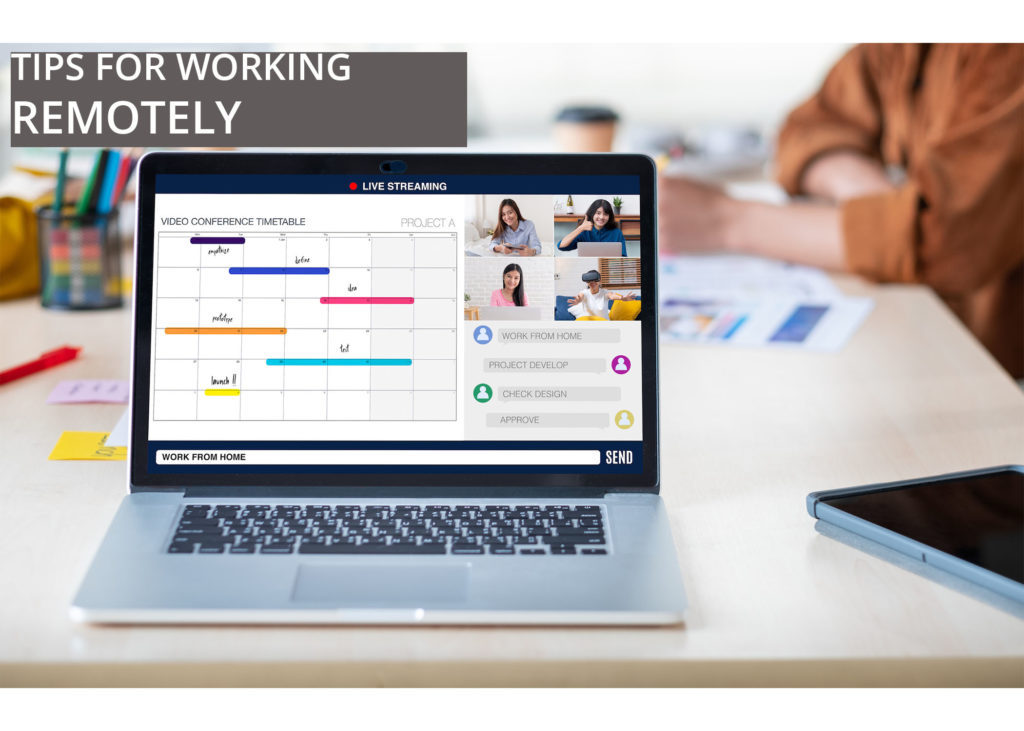
The COVID-19 outbreak has changed the way we work in what seems like only a matter of weeks, especially for those in education.
Millions of people suddenly found themselves in a remote work environment, perhaps for the first time ever. While there are many benefits to working remotely, there are even more differences when compared to traditional on-site work — especially when you’re forced into this situation.
But even if you’re new to working remotely, following certain informal measures can help you thrive and be productive.
Here are four tips for working remotely:
COMMUNICATION IS KEY
Communication is important in any job, even when you see your colleagues or students every day. When you’re working remotely, the need for communication is enhanced. Let others know how they can reach you — whether that’s through email, text, phone calls or online chat — and respond in a timely manner.
You also want to make sure that you communicate often.
Let others know what you are doing, when you need help and what you expect from them. This is not the time to assume that others know what’s going on. Err on the side of over-communication to help ease fears and keep everyone on the same page. Of course, don’t expect to get immediate responses as you would in a face-to-face conversation.
Most importantly, give others a little grace since they’re also adjusting to the new normal.
DON’T BE AFRAID TO ASK QUESTIONS
Working from home can present technological difficulty. You may be required to log in to a network in order to access certain systems or software. You will have to be your own IT department in some ways.
For example, you may need to set up your computer, printer, call forwarding and other office equipment to do your job at own home. It’s important to ask questions if you need assistance. Reach out to colleagues or your organization’s IT department if something isn’t working. You might even be able to connect with students or instructors at your institution to learn how they’re using technology and what’s working for them.
Chances are, someone else has experienced the same issues you’re facing and might be able to help.
CREATE CHECK-INS
Even under the best of circumstances, change isn’t always easy. It’s even more difficult when facing uncertain days ahead. This is exactly why you should make it a priority to check in with your coworkers on a regular basis.
Check-ins are dedicated times set to communicate with coworkers, present updates and collaborate. Similar to office hours, check-ins should be scheduled for a few times each week at minimum. In today’s workplace, most check-ins are done with video meeting apps such as Zoom, Google Meets, and Microsoft Teams or via online chat software like Slack.
It’s easy to feel isolated and overwhelmed during this time, but personal and professional connection will help ease this transition.
HAVE SOME FUN
When working remotely, some people tend to overwork. This is why you also need to make time to have a little fun.
Schedule group calls or chats with your coworkers where you get together and talk about something other than work. Catch up with others, hear stories about kids and pets interrupting work, bond over the lack of supplies like toilet paper in your local grocery store or simply share positive things you’ve seen people doing during this crisis.
Trust us, this is important. These informal conversations don’t need to be scheduled at a regular cadence, but they will help you and everyone you work with feel less isolated when you do get a chance to connect.
Working remotely doesn’t have to be a bad thing. When done properly, it can lead to increased productivity, reduced stress, higher morale and greater job satisfaction.
As always, if you have any questions or if we can support you in anyway during this time, don’t hesitate to reach out to your account manager.
